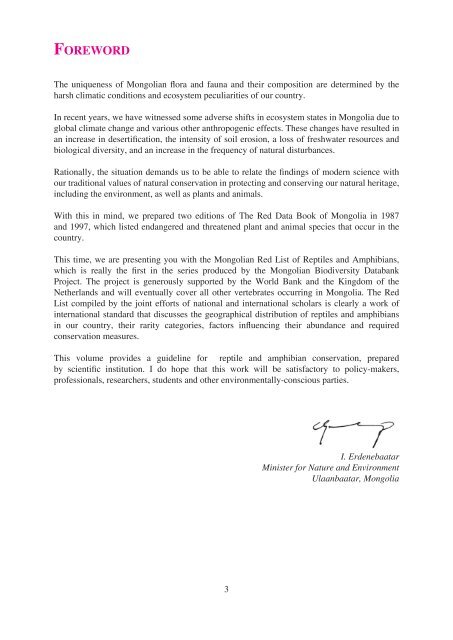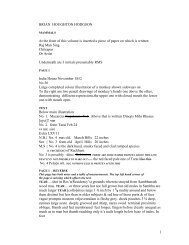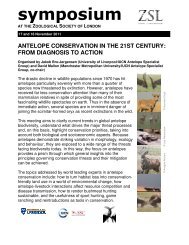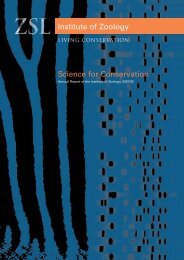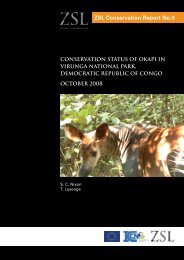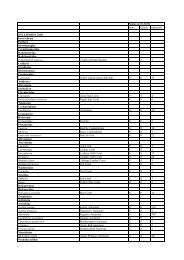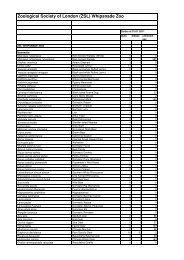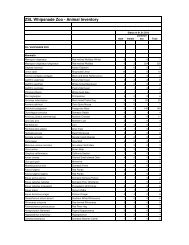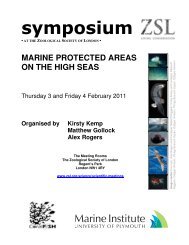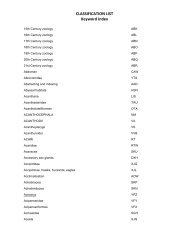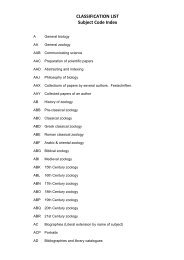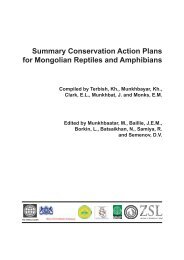Mongolian Red List of Reptiles and Amphibians - Web - Zoological ...
Mongolian Red List of Reptiles and Amphibians - Web - Zoological ...
Mongolian Red List of Reptiles and Amphibians - Web - Zoological ...
You also want an ePaper? Increase the reach of your titles
YUMPU automatically turns print PDFs into web optimized ePapers that Google loves.
FOREWORD<br />
The uniqueness <strong>of</strong> <strong>Mongolian</strong> fl ora <strong>and</strong> fauna <strong>and</strong> their composition are determined by the<br />
harsh climatic conditions <strong>and</strong> ecosystem peculiarities <strong>of</strong> our country.<br />
In recent years, we have witnessed some adverse shifts in ecosystem states in Mongolia due to<br />
global climate change <strong>and</strong> various other anthropogenic effects. These changes have resulted in<br />
an increase in desertifi cation, the intensity <strong>of</strong> soil erosion, a loss <strong>of</strong> freshwater resources <strong>and</strong><br />
biological diversity, <strong>and</strong> an increase in the frequency <strong>of</strong> natural disturbances.<br />
Rationally, the situation dem<strong>and</strong>s us to be able to relate the fi ndings <strong>of</strong> modern science with<br />
our traditional values <strong>of</strong> natural conservation in protecting <strong>and</strong> conserving our natural heritage,<br />
including the environment, as well as plants <strong>and</strong> animals.<br />
With this in mind, we prepared two editions <strong>of</strong> The <strong>Red</strong> Data Book <strong>of</strong> Mongolia in 1987<br />
<strong>and</strong> 1997, which listed endangered <strong>and</strong> threatened plant <strong>and</strong> animal species that occur in the<br />
country.<br />
This time, we are presenting you with the <strong>Mongolian</strong> <strong>Red</strong> <strong>List</strong> <strong>of</strong> <strong>Reptiles</strong> <strong>and</strong> <strong>Amphibians</strong>,<br />
which is really the fi rst in the series produced by the <strong>Mongolian</strong> Biodiversity Databank<br />
Project. The project is generously supported by the World Bank <strong>and</strong> the Kingdom <strong>of</strong> the<br />
Netherl<strong>and</strong>s <strong>and</strong> will eventually cover all other vertebrates occurring in Mongolia. The <strong>Red</strong><br />
<strong>List</strong> compiled by the joint efforts <strong>of</strong> national <strong>and</strong> international scholars is clearly a work <strong>of</strong><br />
international st<strong>and</strong>ard that discusses the geographical distribution <strong>of</strong> reptiles <strong>and</strong> amphibians<br />
in our country, their rarity categories, factors infl uencing their abundance <strong>and</strong> required<br />
conservation measures.<br />
This volume provides a guideline for reptile <strong>and</strong> amphibian conservation, prepared<br />
by scientifi c institution. I do hope that this work will be satisfactory to policy-makers,<br />
pr<strong>of</strong>essionals, researchers, students <strong>and</strong> other environmentally-conscious parties.<br />
3<br />
I. Erdenebaatar<br />
Minister for Nature <strong>and</strong> Environment<br />
Ulaanbaatar, Mongolia


